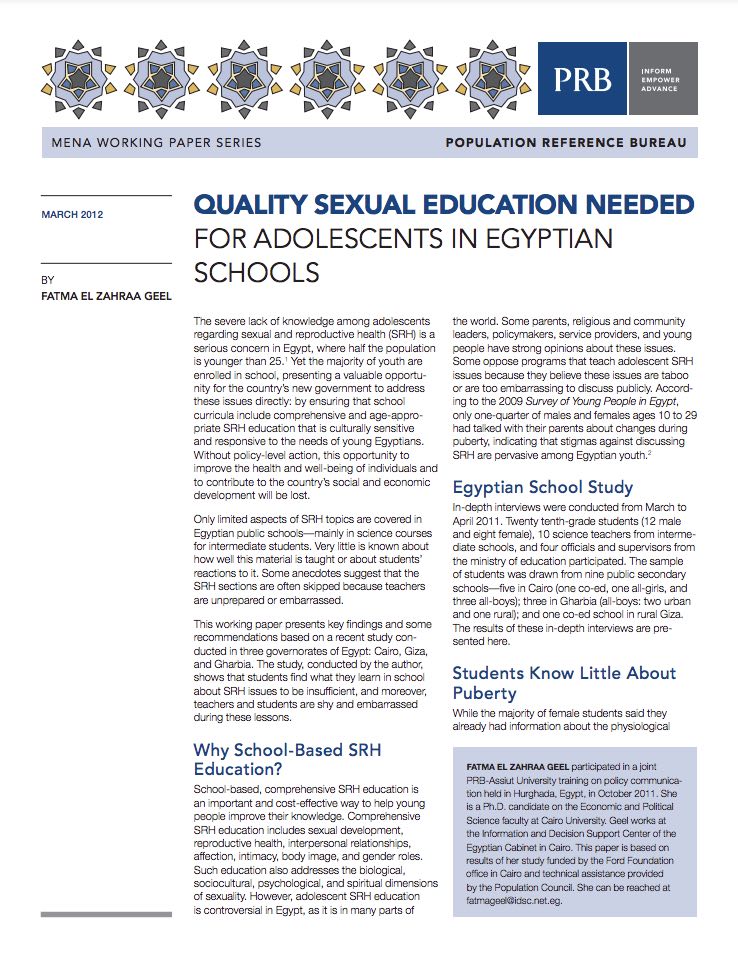603 Search Results Found For : "������������������������KaKaoTalk:za33������������������:www.za32.net"

Quality Sexual Education Needed for Adolescents in Egyptian Schools
The severe lack of knowledge among adolescents regarding sexual and reproductive health (SRH) is a serious concern in Egypt, where half the population is younger than 25.

Accepting Applications for an Employer of Record in Senegal and/or Kenya
Accepting Applications for French and English-Speaking Graphic Design Consultant
Poverty Is a Persistent Reality for Many Rural Children in U.S.
(2009) Although child poverty conjures up an urban image for most Americans, one-fifth of children in poverty live in rural areas. Poverty rates are higher for rural than for urban children, and the gap has increased in recent years.
The Baltics: Demographic Challenges and Independence
(2000) Latvia, Estonia, and Lithuania are in the midst of a transition to independence after nearly 50 years of domination by the Soviet Union. Some of the first laws passed by the newly independent governments placed strict limits on who could become a citizen and actively promoted use of the native languages.

Project: Appalachia: Demographic and Socioeconomic Trends
Appalachian Region Data Overview from the 2014-2018 American Community Survey
The latest report on the Appalachian Region can help state and local policymakers build community capacity and strengthen economic growth.
A New Way to Address Poverty Alleviation
(2006) Over the past decade, a growing number of small population-environment field projects, funded principally by the David & Lucile Packard Foundation and the U.S. Agency for International Development (USAID), have achieved not only their main goals—which varied from increasing child immunization and family planning to protecting mangrove forests—but also helped reduce poverty within project areas.

